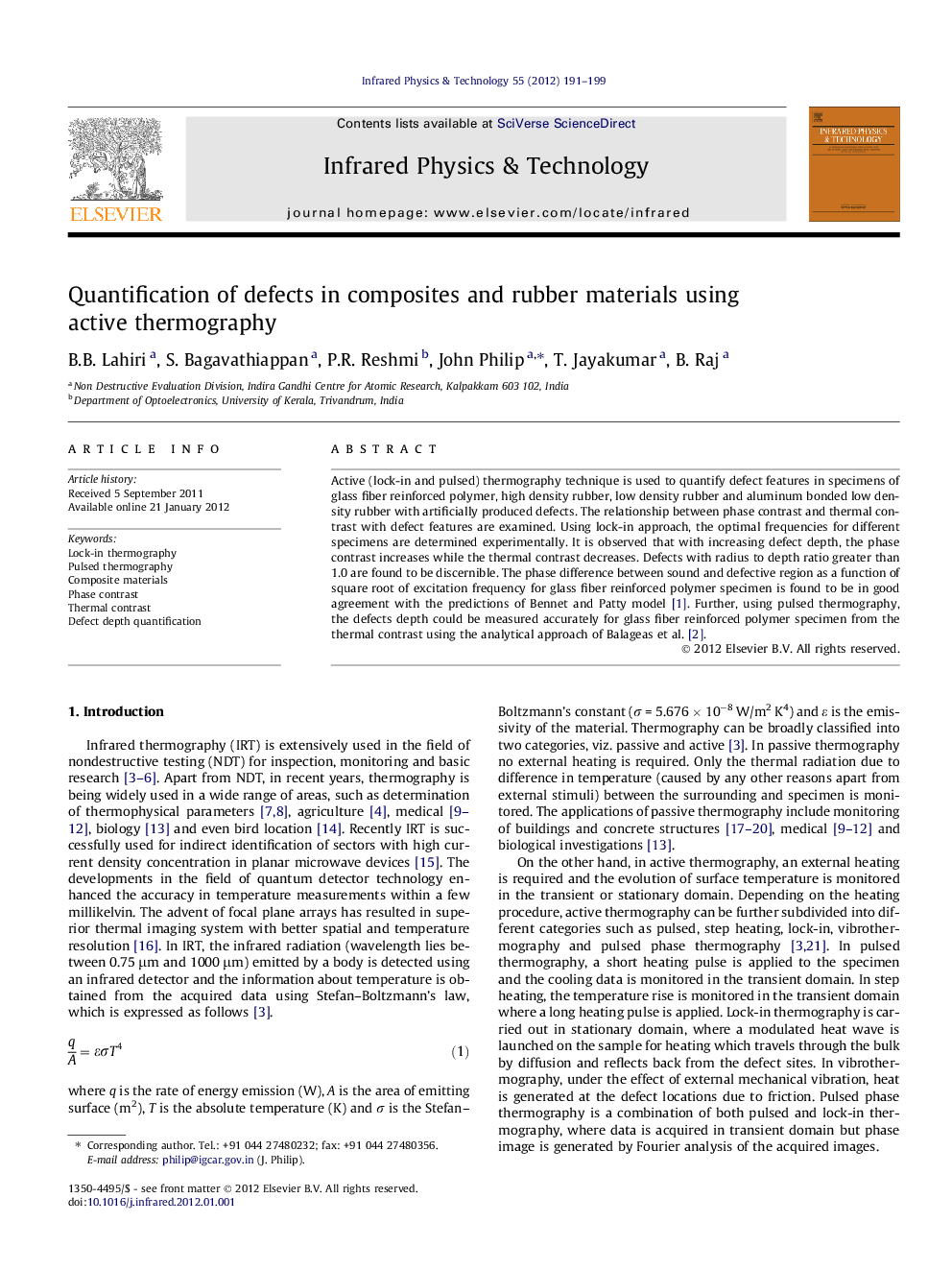| Article ID | Journal | Published Year | Pages | File Type |
|---|---|---|---|---|
| 1784895 | Infrared Physics & Technology | 2012 | 9 Pages |
Active (lock-in and pulsed) thermography technique is used to quantify defect features in specimens of glass fiber reinforced polymer, high density rubber, low density rubber and aluminum bonded low density rubber with artificially produced defects. The relationship between phase contrast and thermal contrast with defect features are examined. Using lock-in approach, the optimal frequencies for different specimens are determined experimentally. It is observed that with increasing defect depth, the phase contrast increases while the thermal contrast decreases. Defects with radius to depth ratio greater than 1.0 are found to be discernible. The phase difference between sound and defective region as a function of square root of excitation frequency for glass fiber reinforced polymer specimen is found to be in good agreement with the predictions of Bennet and Patty model [1]. Further, using pulsed thermography, the defects depth could be measured accurately for glass fiber reinforced polymer specimen from the thermal contrast using the analytical approach of Balageas et al. [2].
► The relationship between phase and thermal contrast with defect features is established. ► Defects depth is measured accurately using pulsed thermography. ► With increase in defect depth, the phase contrast increases while thermal contrast decreases. ► Phase contrast and excitation frequency follows Bennet and Patty model.
